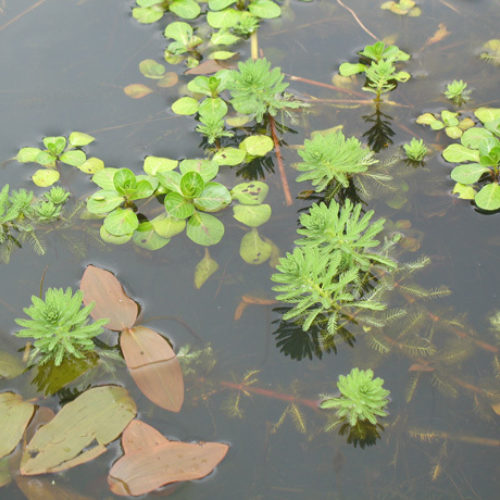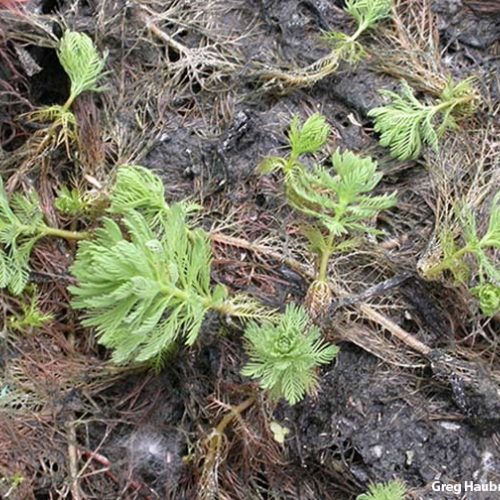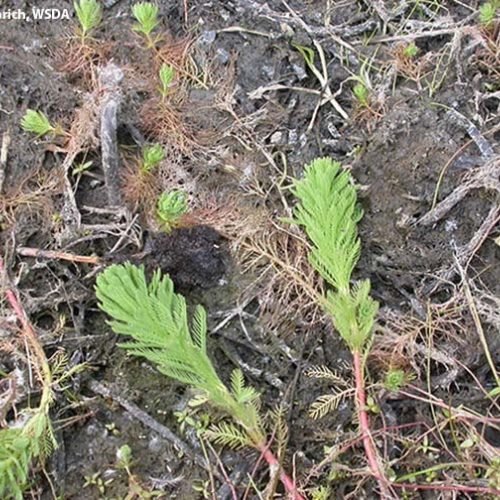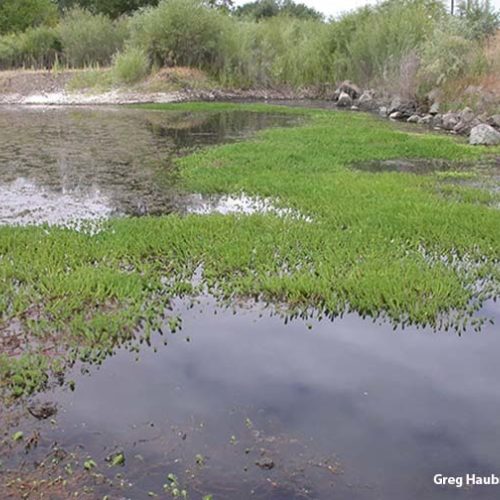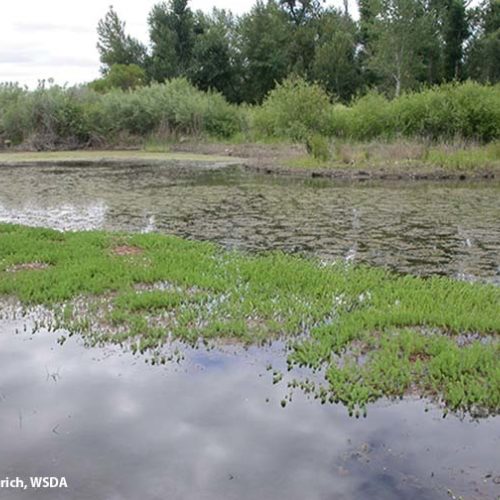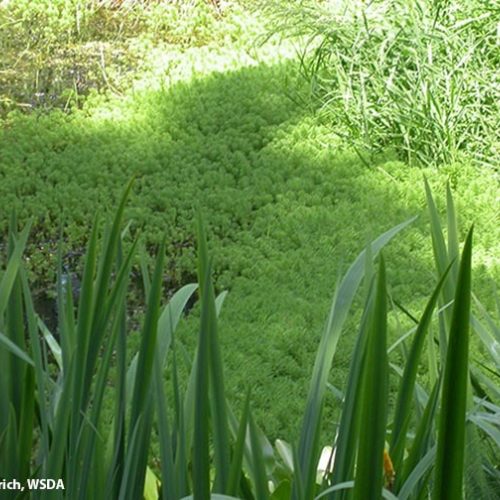Parrotfeather
Myriophyllum aquaticum
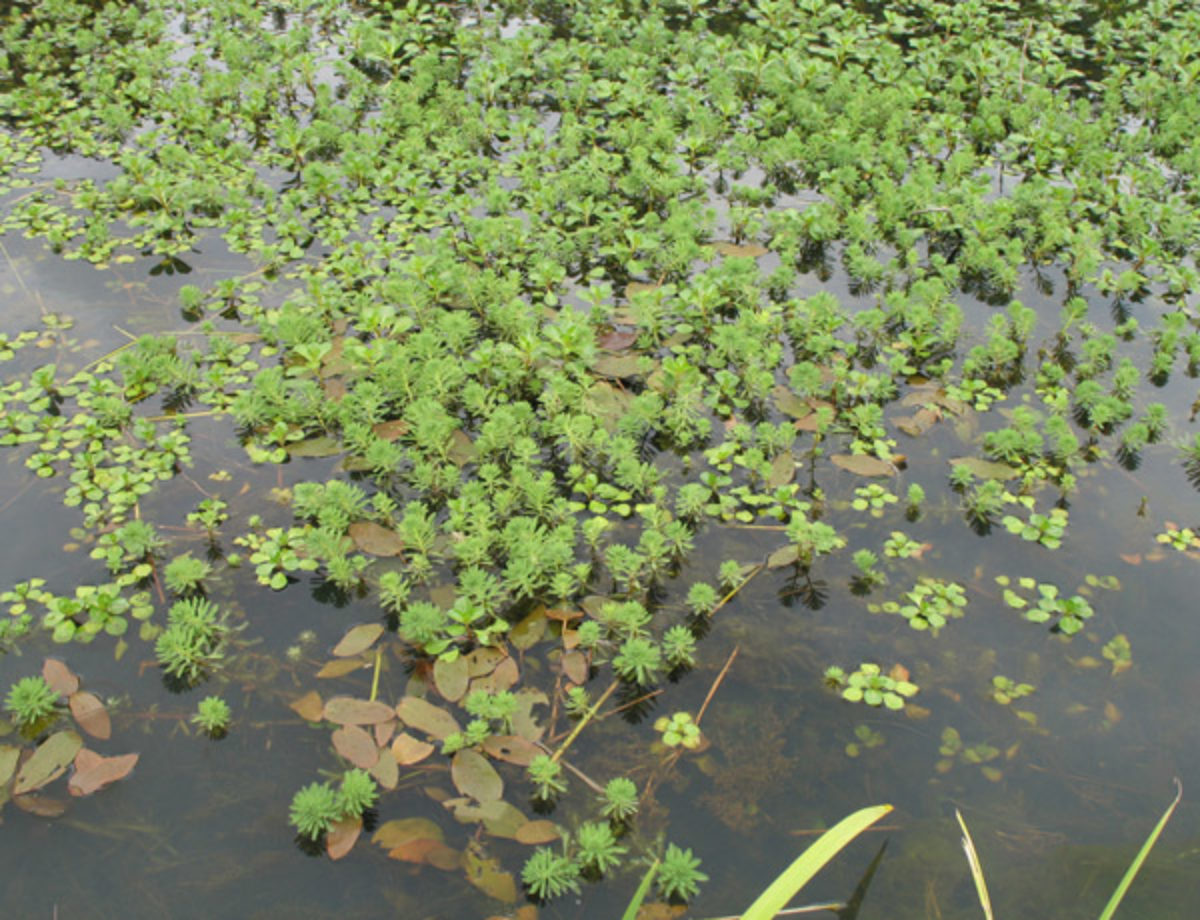
Family: Haloragaceae
Other Common Names: water-feather, Brazilian water-milfoil
Weed class: B
Year Listed: 1993
Native to: South America
Is this Weed Toxic?:
not known to be
Legal listings:
WAC 16-752; WSDA Quarantine list (prohibited plant list)
Why Is It a Noxious Weed?
Parrotfeather is an ornamental aquatic plant that has escaped cultivation. Infestations can alter aquatic ecosystems. It forms dense mats that shade out other native aquatic plants as well as inhibit water flow and recreational activities.
How would I identify it?
General Description
It is a submerged aquatic plant and has emergent and submersed leaves. It is occasionally found on mud banks. Long rhizomes and stems intertwine to form dense mats. Stems grow to 16 feet long.
Flower Description
Flowers are inconspicuous and white in leaf axils of emergent stems.
Leaf description
Leaves are feather-like and arranged in whorls of 4 to 6 leaves. Emergent leaves are bright green and look similar to little fir trees. Submersed leaves are darker.
Stem description
Emergent stems can grow up to a foot out of the water. Submersed stems may grow up to 16 feet long.
May Be Confused With
Parrotfeather looks similar to Eurasian watermilfoil (Myriophyllum spicatum), also a Class B noxious weed in Washington. If you need help with identification, please contact your county noxious weed coordinator.
Where does it grow?
Parrotfeather is found in freshwater ponds, streams, lakes and canals. Please click here to see a county level distribution map of parrotfeather in Washington.
How Does it Reproduce?
Since only female plants are present in North America, parrotfeather reproduces by stem and rhizome fragments.
How Do I Control It?
General Control Strategy
Parrotfeather can be difficult to control. Since it spreads by stem and rhizome fragments, mechanical methods such as cutting, harvesting and underwater tilling is not advisable. These methods can increase infestations by dispersing plant fragments that may root in uninvaded areas.
Mechanical Control
Mechanical methods are not advised unless an area is entirely invaded by plants; otherwise, mechanical methods may increase infestation.
Biological Control
Parrotfeather is unpalatable to grass carp.
Herbicide Control
Because herbicide availability and regulation differ between states, we recommend the Washington Department of Ecology website for information on aquatic weed management and herbicides, or contact your county noxious weed coordinator.
For More Information
See our postcard for early detection information about parrotfeather.
See our Written Findings for more information about parrotfeather (Myriophyllum aquaticum).
Asotin County NWCB Fact Sheet on parrotfeather
Pierce County NWCB Fact Sheet on parrotfeather
Whatcom County NWCB Fact Sheet on parrotfeather



